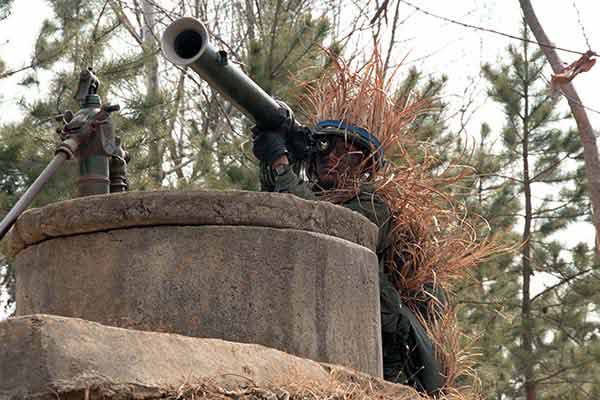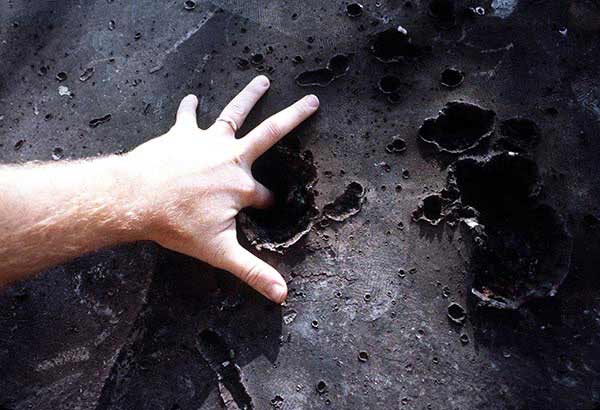A rocket-launcher is a versatile device that is similar to a mortar or cannon, but is usually much lighter-weight and more portable. Rocket-launchers aim and fire rocket-powered projectiles. They normally have a longer barrel than a mortar and are much lighter than cannon, especially in respect to the wall thickness of the barrel, also known as a launch tube. Rocket-launchers are frequently breech-loaded, but some are muzzle-loaded. There are many variations of rocket-launchers in use today. Some examples are hand-held and as portable as machine guns while other types are fitted to tanks or aircraft.

A soldier aims an M-20 anti-tank rocket launcher during the joint South Korea/US Exercise Team Spirit '84.
Photo: SPC 4 Long.
Department of Defense. American Forces Information Service.
National Archives and Records Administration.
Still Picture Branch; College Park, Maryland.
Because a rocket-launcher projectile has a rocket engine, greater ranges can be achieved and the velocity of a projectile can actually increase after it leaves the muzzle. In addition, recoil is greatly reduced so that one person can fire this very powerful and lightweight weapon. In some cases, multiple-staged rockets power the projectile, producing a softer launch.

AH-64A Apache helicopters pass over the desert during Operation Desert Shield.
Each helicopter is armed with a pair of 19-round rocket launchers for 2.75-inch folding-fin aerial rockets;
the helicopter at right is also carrying eight AGM-114 Hellfire missiles.
Department of Defense. American Forces Information Service.
National Archives and Records Administration.
Still Picture Branch; College Park, Maryland.
Rocket-launcher projectiles usually carry an explosive charge and armor-piercing ammunition is frequently rocket-powered. The explosive charge of the projectile may also be designed in stages so that the armor-piercing effect is greatly enhanced. In this case, the first charge pierces the armor and the second charge detonates moments later, hopefully inside the armor plate.

A close-up view of explosion holes on an armor-plated steel piece.
The penetration test of a copper experimental explosive projectile takes place at an armament laboratory near the base, 5/1/1980.
Base: Eglin Air Force Base, Florida; USA.
Photo: Department of Defense. American Forces Information Service.
National Archives and Records Administration.
Still Picture Branch; College Park, Maryland.